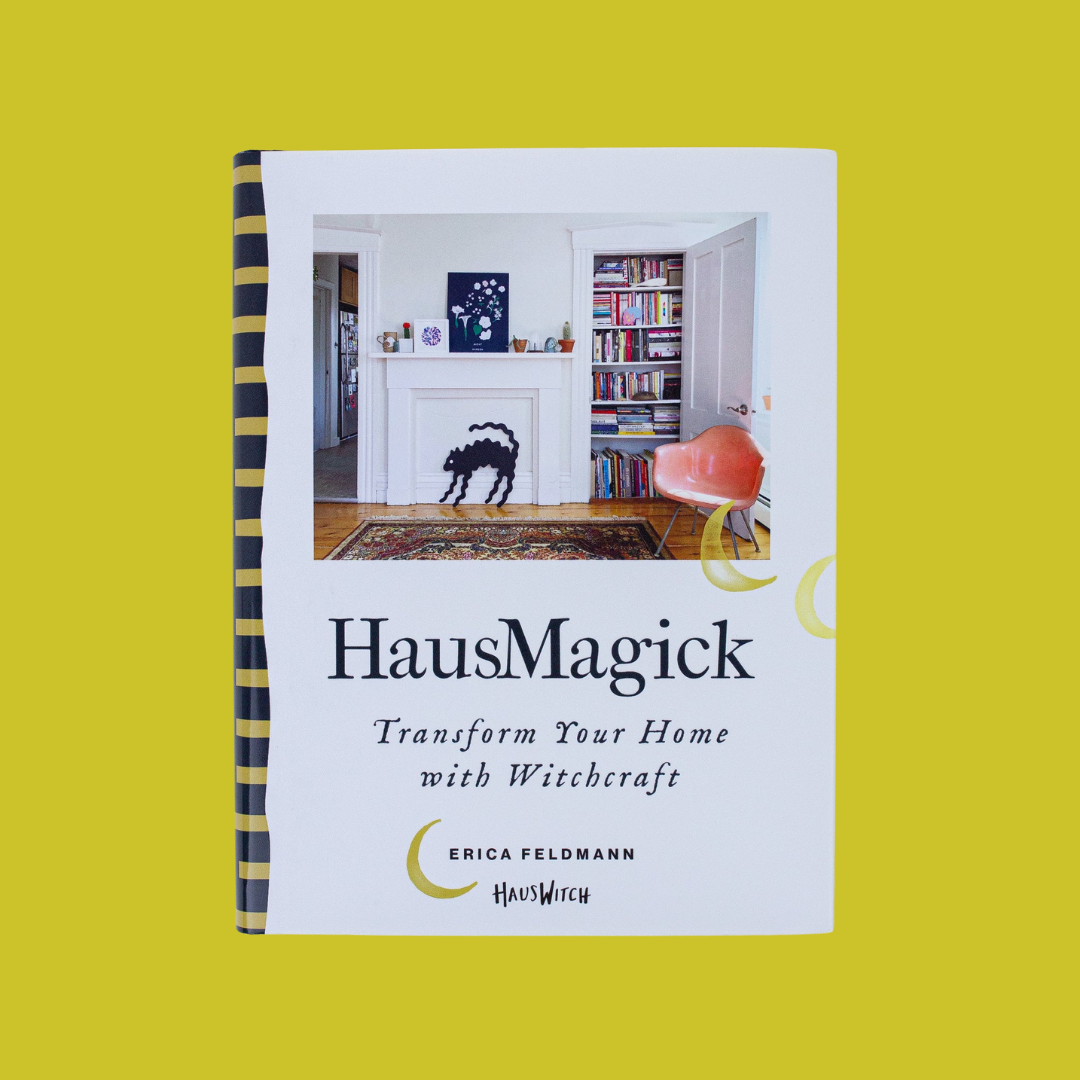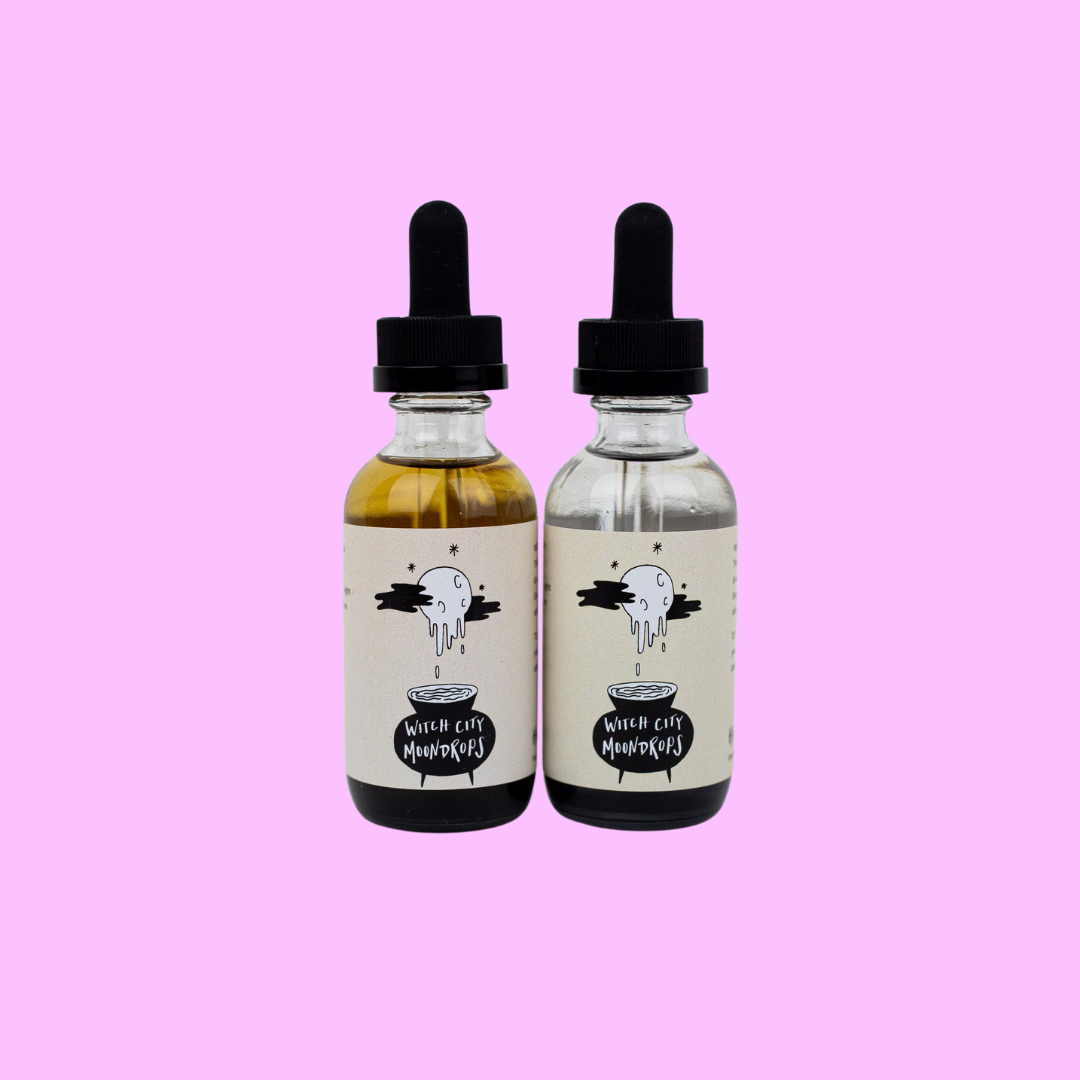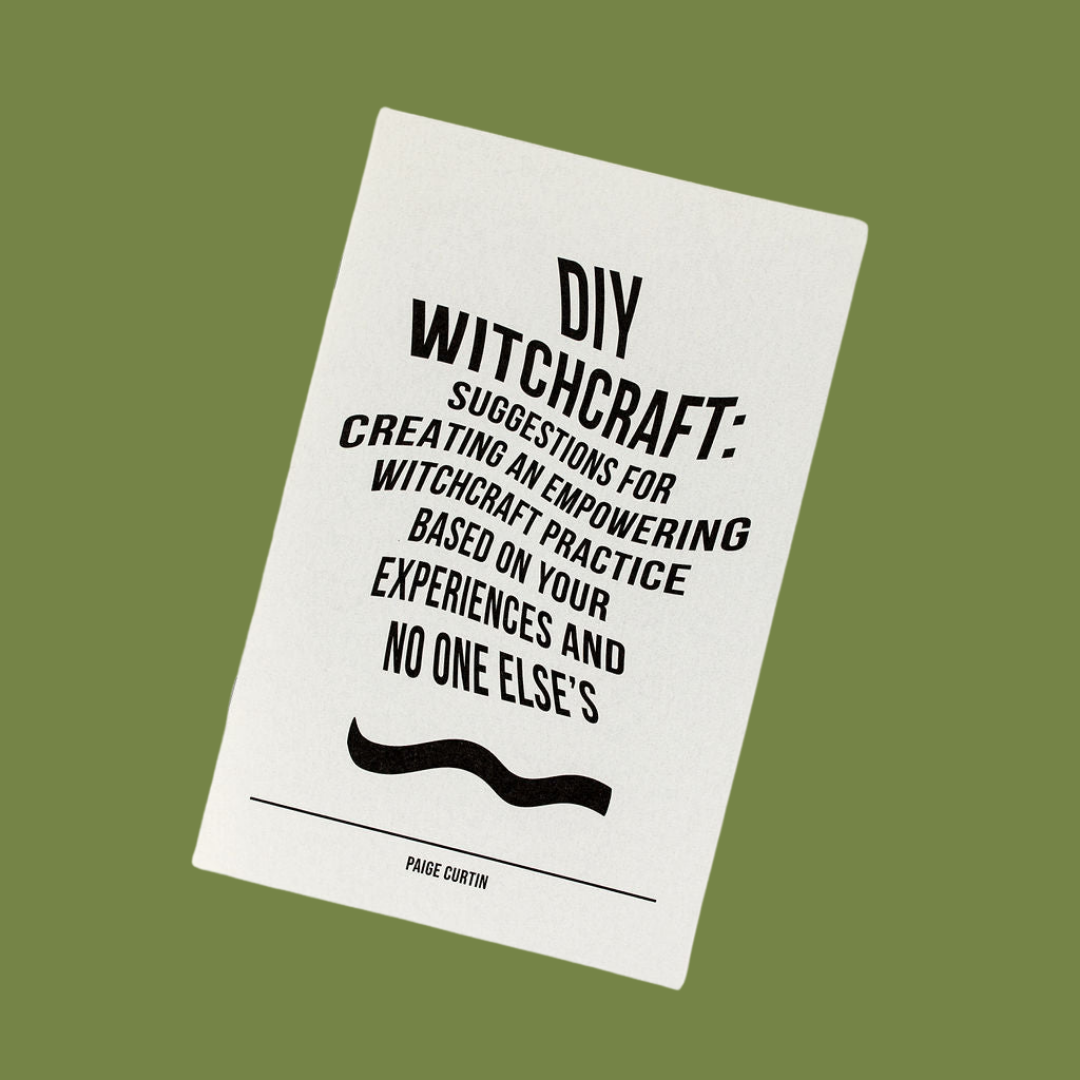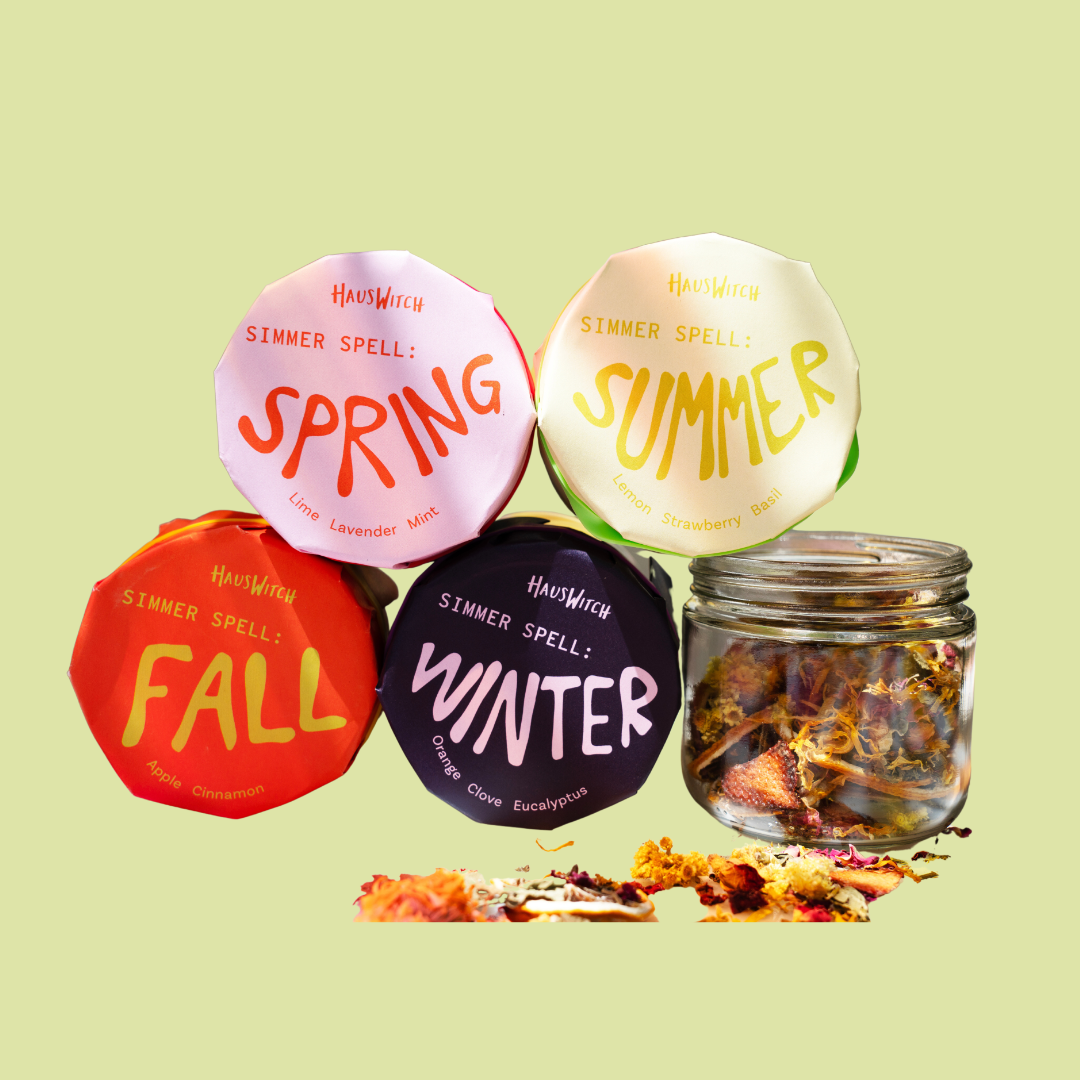Welcome to another turn of the Wheel of The Year! This season we’re talkin’ Yule.
You may have heard Yule as a kind of synonym for Christmas, but it’s actually one of the main sabbats (pagan holidays). Like other sabbats, modern Yule is a mashup of various folk holidays that were Christianized by crusaders... but whose influence peeks out from every candle and Christmas tree.
OG Yule was a fertility festival (weren't they all, wink wink) in honor of the Norse god Odin, and referred to celebrations that spanned the entire two-month winter season. Wiccan Yule is loosely based on this festival + Celtic solstice celebrations, with a little twist on the Christ myth, described in The Witch's Bible as "marking the death and rebirth of the Son-God; it also marks the vanquishing of the Holly King, God of The Waning Year, by the Oak King, God of The Waxing Year. The Goddess, who was Death-in-Life at Midsummer, now shows her Life-in-Death aspect; for although at this season she is the 'leprous-white lady', Queen of the cold darkness, this is her moment for giving birth to the Child of Promise, the Son-Lover who will re-fertilize her and bring back light and warmth to her kingdom". So that's... uh, that. Now is probably a good time to mention that we are not a Wiccan coven.
Yule for our coven isn’t so easy to define; it’s kind of like a game of spiritual Telephone that draws from a ton of different traditions (because, surprise! We are all different people with different experiences). We subscribe to Yule as a seasonal title, with Solstice as our main holiday. Winter Solstice (December 21st) is the official beginning of Winter and (maybe counter-intuitively) the beginning of longer periods of sunlight. Basically all the major late fall/early winter holidays like Christmas, Hanukkah, and Diwali are literally or metaphorically meant to celebrate the Earth tipping back towards the light and longer days, and are based on similar folk practices.
Some witches and mystics (like us) find a lot of empowerment in reclaiming, replacing, or adjusting the traditions of their upbringing. For example: The Christmas Tree has origins in bringing evergreens into the home as a symbol of everlasting life during the dark days. So we don’t have a Christmas tree, we have a Yule bush! The idea of a coven rolling up to a Christmas Tree Farm sounds fun and feisty, like witchy secret agents co-opting the holiday. But if you're not a plant-witch or if your familiars would have a little too much fun chomping pine needles you can still have your very own Yule Bush in whatever size, shape, and color you want! The HausWitch Yule bush (Yulie) is gold and sparkly because any way you can bring light into your space is the right way to celebrate. Candles, the titular Yule Log, even strands of electric fairy lights all count towards team light. The light symbolizes life and vitality, the promise of a fertile Spring (which is especially important for those of us who have a really hard time getting through the winter).
I highly recommend checking out Missing Witches by our babe-a-licious friends Risa Dickens and Amy Torok, which explores each sabbat through radical witchcraft. In the Yule chapter, they describe the Roman feast of Sol Invictus on December 25th and the matriarchal Mother’s Night on December 20th:
“This is a time to draw closer to your maternal ancestors. Mother’s Night begins this season in the dark, tied with our breath and our voices to all the possibilities inherent in that space before and between. We keep the Yule Log burning to keep us on this side of life, to stay warm and survive until tomorrow. This moment is a dangerous encounter with death, just like the labor of childbirth has been for most of human history. And in this way this moment is, by its very nature, dangerous to the patriarchy.”
You can draw closer to your maternal ancestors this Yule by making winter recipes from the maternal side of your family (HWIC Erica specializes in her grandma Barbara's cinnamon rolls) and leaving a portion out as an offering, telling stories about moms and grandmas past, or donating to local birthing centers, women's shelters, or direct aid organizations like Mamás Unidas here on the North Shore.
Other Spell suggestions for Yule:
-Sit with the darkness for as long as you can. Notice what you notice when the lights are off, what senses are heightened. What does your energetic body feel like in the dark? When you turn the lights on, what’s the first thing you see? What patterns dance in front of your newly-opened eyes?
-Connect with your angels! Outside of religious iconography, Angels are luminous spirit beings of unconditional love. In The Seven Types of Spirit Guide author Yamile Yemoonyah wisely writes: "In the beginning of my spiritual explorations, I always skipped angels, because they only seemed connected to Christianity... I also didn't like how they were almost always portrayed as European-ancestored blond, blue-eyed females in white gowns... Just like other types of spirit guide, angels are non-denominational and help people of all religions and spiritual lineages. They're high-vibrational beings who exude pure love. There's no other type of spirit guide that carries that kind of peaceful energy." Since the collective invokes these light-beings so much this time of year, it’s a perfect opportunity to reach out. Thinning veils aren’t just for shadow work. Go get yourself some divine validation.
-Give radically. I don’t mean give until you have nothing left, I mean when you have to give, make it count. Shop small or secondhand where you can, and consider making donations for the acquaintance-level folks on your list. Maybe you don’t need to break the bank on a $20 knicknack for each of your six ex-roommates from college. Maybe you can make a $5 donation in each of their names to a mutual aid org like Trans Santa and let that full $30 go further than $120 in Dunks gift cards ever would have.
-Build a gingerbread house for your ancestors to come home to for the holidays. Add their favorite candies and sweets (I like to include mini bottles of beloved liquor) and make sure they know they have a space in your home.
How else do you honor the season? What makes you go hmmmm about the holidays? Make sure to tag us in your celebration Stories so we can feel like we're having a big ol' coven Winter gathering! See you in 2024!





